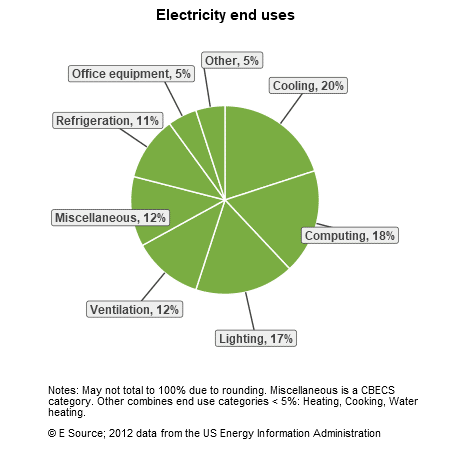COVID-19 risk reductions strategies in the K-12 world have been fairly straight forward. Elimination of physical contact can be addressed by remote learning and administrative controls such as identifying and isolating infected students, cleaning, and disinfecting facilities and requiring masks cut down on transmission rates.
Newer to the scene, however, are increased K-12 ventilation requirements. Good ventilation is always important for keeping toxins and airborne pathogens from building up inside, and never more so than now. Aerosols remain airborne for hours and can be inhaled by nearby people or transferred through a building’s HVAC system.
As life in the US returns to normal, HVAC systems – particularly ventilation and balanced air circulation – will play a significant role in public health and confidence. However, these systems affect the amount of air that must be heated or cooled in the first place, thereby directly increasing energy costs.
So, what can be done to mitigate these increases in operating outflow? The major opportunities lie with variable volume ventilation systems and optimizing the associated heating and cooling cooling equipment.

The Cost of K-12 Ventilation Requirements
Bringing more fresh air into buildings is an effective first step to kill airborne pathogens like COVID19, but typical school ventilation designs may not support increased volume. And fresh air takes more energy—and is, thus, more costly—to heat or cool fresh air—compared to recirculated air. This is particularly true in overly warm or cold climates.
In a typical school building, space heating, cooling, and lighting together account for over 30% of energy use. The cost of ventilation implementation varies with the complexity, flexibility, and age of HVAC equipment, systems, controls and Building Automation Systems (BAS). Newer schools with systems built in the last few years might just need to upgrade filtration systems at a relatively modest expense. Older school buildings that require more efficient ventilation will incur significant costs both due to implementation costs (new duct work, electrical requirements, etc.) and the increased cost of moving more air.
According to NYSERDA, a New York state-based agency which promotes energy efficiency and the use of renewable energy sources, increasing the outdoor air ventilation rates to ASHRAE standards would increase the total annual energy cost (gas and electricity) by an estimated 6% or $10.25 per occupant per year. For districts that might be consolidating or losing population, it can be hard to justify putting that kind of money into a building.
Choosing Efficient Ventilation Systems
One way to ensure requirements are met without overspending is selecting the right type of ventilation system. Ventilation systems can be classified into constant air volume (CAV) and variable air volume (VAV) systems, each with the underlying effort to increase outside air to the spaces and treat return air. CAV systems supply a constant airflow at variable temperature and are best suited to manufacturing sites, warehouse, and sites with 24/7 operations. CAV systems are less expensive and simpler to design and install.
VAV systems supply a variable airflow at constant temperature and are best suited to schools where occupant load is constantly changing. Variable systems typically offer energy savings above 30% compared with CAV systems by controlling the amount of outside air being supplied based on occupancy. Less energy is consumed because the fans only run when outside air is needed.
Investigating Rebates
In addition to more efficient operation, VAV systems offer additional savings by qualifying for various utility rebates which help lower the initial project cost of the energy-saving measures and shorten the payback period. Many utility companies provide rebate and incentive programs for customers who install energy efficient lighting, HVAC systems, refrigeration and other high-efficiency equipment or systems.
Most utility companies have two types of rebates and incentives: prescriptive and custom. Prescriptive rebates typically consist of one-for-one replacement incentives such as a flat rebate for each T8 fluorescent bulb replaced with an LED. Schools can typically expect prescriptive rebates for lighting, steam traps and valve and fitting insulation. A Custom Rebate program is designed to incentivize unusual equipment or process changes that will reduce energy consumption and energy demand but on equipment that doesn’t meet the requirements of the utility’s prescriptive rebate program. Instead of having specific guidelines about what energy-saving upgrades to perform, the customer must instead prove that a project will save energy and the rebate value varies depending on the amount of kWh and KW saved. Schools can earn significant custom rebates for system-level VAV projects involving control strategies, duct and expansions and new terminal units.
Optimizing Cooling to Reduce Ventilation Costs
Although ventilation systems consume less energy than space heating or air conditioning equipment, they affect the amount of air that must be heated or cooled in the first place. Therefore, any upgrade that optimizes airflow also leads to heating and cooling savings.
Cooling optimization solutions can offset the rise in energy consumption caused by increased ventilation. Specifically, adaptive control solutions, like tekWorx Xpress®, use the least amount of energy possible to meet necessary comfort cooling and space conditions. Using real-time data, the most efficient pieces of equipment and control sequences are always in operation, drastically reducing energy costs and lowering overall energy budgets.
K–12 school districts in the US spend about $8 billion on energy each year. Although energy costs account for only 2% to 4% of school district expenditures, it is one of the few expenses that can be decreased without negatively affecting classroom instruction. By implementing energy-efficient measures, along with operations and maintenance strategies, school districts can generate substantial energy cost savings while improving the physical environment of school facilities.


